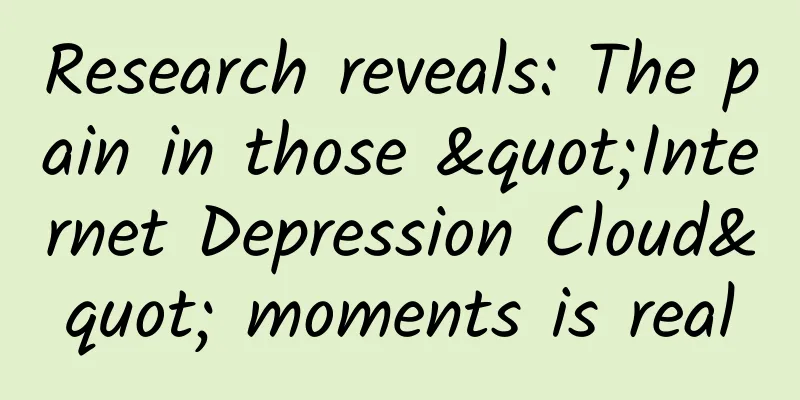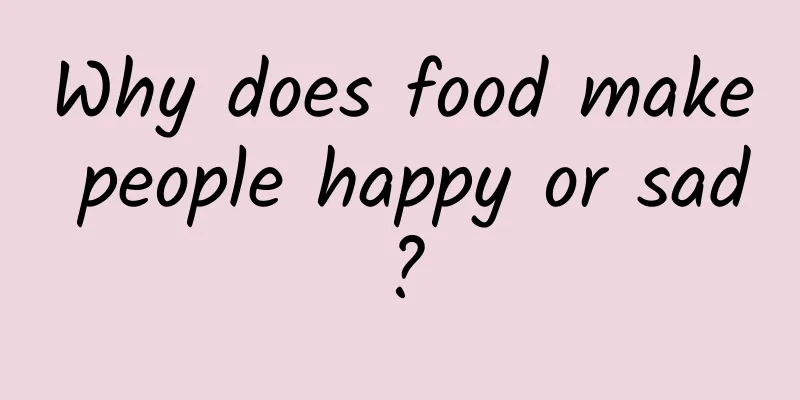Research reveals: The pain in those "Internet Depression Cloud" moments is real

|
Slowly close your eyes and imagine the following scenarios in your life: your company team fired you; you saw your friends holding a party on WeChat Moments but didn’t invite you; you ran into your ex enjoying a romantic dinner with someone else in a restaurant… Do the rejection signals released in these social scenarios make you feel more or less "hurt", and have they ever brought you those "Internet depression" moments? So, which one hurts more, the "emotional injury" in our social lives or the physical injury? Science has the answer, and scientists have now been able to map not only the very real processes behind both, but also the extent to which they are similar. Obviously, all of these forms of social pain have some potential to be harmful. Recently, Geoff MacDonald from the University of Queensland and Mark R. Leary from Wake Forest University jointly published a paper titled "Why Does Social Exclusion Hurt? The Relationship Between Social and Physical Pain" with the aim of linking social pain more strongly to humans' response to perceived social exclusion and considering the impact of social pain on important issues such as relational aggression and pain disorders. In this paper, the authors use the term social pain to refer to the specific emotional response that occurs when a person is excluded from an ideal relationship or is devalued by an ideal relationship partner or group, and propose a hypothesis: social exclusion is painful because the response to exclusion is mediated by aspects of the body's pain system. The article is very clear, first presenting a theory that the overlap between social pain and physical pain is actually an evolutionary development in response to threat. Then, the article lists a series of evidences showing that humans show a fusion between the two types of pain in thoughts, emotions and behaviors, and that social pain and physical pain have common physiological mechanisms. Finally, the article explores the impact of social pain theory on rejection-induced aggression and physical pain disorders. Social pain and physical pain are inextricably linked The brain responds to social pain in much the same way it does to physical pain, which they believe is an evolutionary response. Social pain theory is based on the idea that the possibility of separation from significant social entities posed a significant challenge to the survival of our ancestors, dating back at least to the earliest mammals and perhaps earlier. For early humans, if you successfully become a member of a group, it means you can get more security and resources; if you are rejected by the group, you will inevitably become vulnerable and isolated. Therefore, humans evolved to seek social acceptance and to view social rejection as a threat to happiness. As a result, people have to associate rejection with pain in order to motivate themselves and protect themselves from threats to their social relationships. This means that the pain of being fired, cut off from a relationship, or having a breakup is very real. Similar to physical pain, the same areas of the brain register social pain. Scientists have determined that there is significant overlap between physical pain and social pain. In both cases, pain activation is intended to elicit self-induced escape behaviors or, in the case of self-induced pain, to prevent harmful behaviors. The pain memory then acts as a warning to prevent repeating the risky behavior in the future. While memories of physical pain fade, research has found that this is different from social pain, which persists over time and can be reactivated when the memory is triggered. Mapping the different types of pain This study uses the term "social exclusion" to unify rejection and ostracization. Source: Oxford Rejection is usually defined as the other person conveying to you that you are not accepted or needed, often in sad situations such as love, interpersonal relationships and professional endeavors. Meanwhile, exclusion refers to being excluded, ignored or separated from a group. Looking beyond the above two categories, social scientists also see the occurrence of sub-categories such as discrimination, dehumanization and social isolation. So, what are the painful manifestations of social exclusion? Scientists in the early 20th century noted that people often expressed their experiences of social rejection in terms of physical pain: breakups were described as feeling “heartbroken,” while betrayal was like being stabbed in the back or kicked in the stomach. The advent of functional magnetic resonance imaging (fMRI) in the early 1990s allowed scientists to map brain activity by measuring blood flow. Increased blood flow indicates that a part of the brain is being "occupied," which can help researchers observe which parts of the brain are activated when the body is in pain. In the 21st century, scientists finally had the opportunity to test the different ways in which the brain is activated during social rejection. The results confirmed that the depiction of painful feelings was not just a simple artistic exaggeration: the same brain areas activated during physical pain were also activated during social rejection. Virtual social interaction, real pain Some studies have also pointed out that the "pain point" of human emotional hurt is actually not very high. A person doesn’t even need to be physically stimulated to experience those unwanted memories. In a 2003 study published in the journal Science, researchers hooked participants up to an fMRI to observe their responses to virtual social indifference. In the simulation, participants played a game of catch with two virtual players. Soon, the virtual players excluded the participants and began to only toss coins at each other. The virtual players weren’t even real, but the participants’ fMRIs showed that during this exclusion process, the anterior cingulate cortex (ACC), a part of the brain that registers physical pain, had increased blood flow and became more active. Therefore, the authors concluded that the right ventral prefrontal cortex (RVPFC), which is involved in processing risk and fear, helps regulate the pain of social exclusion by disrupting the ACC. A person may forget being ostracized by a virtual snob, but the pain he or she suffers in real life often takes a long time to dissipate. In one study, 40 participants who had experienced abandonment by a loved one (i.e., a failed relationship) in the past six months were hooked up to an fMRI scanner during an experiment. The participants agreed that they had suffered a “strong rejection.” Then, the researchers gave the participants a stimulus, such as mild physical pain (a warm touch on the left arm) and a picture of a friend, and forced them to think back to the breakup when a picture of their ex appeared on the screen. Sure enough, the scans showed neurological overlap between physical and social pain. The study concluded that “social rejection and physical pain are similar not only in that they are both distressing, but also in that they share common representations in the somatosensory brain system.” Can paracetamol “relieve pain”? The overlap between physical pain and social pain is so significant that scientists have found that social pain can also be treated with acetaminophen. In one study, some participants took Tylenol daily while others took a placebo for three weeks. Results of fMRI scans showed that those who took Tylenol had a reduced response to social rejection. However, the authors also point out that social exclusion is a natural part of everyday life and social pain is only one aspect of a wider emotional mechanism, so using paracetamol to "kill the pain" is only a short-term solution. Of course, while existing research clearly points to a link between social and physical pain, it also highlights some stark differences that require further attention. Future research needs to further confirm: repeat the experimental results in human participants and help understand the mechanism by which social status perception affects pain sensitivity; study the specific mechanism by which social conditions affect pain sensitivity, etc. Academic headlines |
<<: What's so strange about hanging a person? Your hair is much stronger than an elephant's hair.
>>: Cui Yong: Why is China's "Nanhai I" called an unprecedented model of underwater archaeology?
Recommend
Douban, the mobile Internet can no longer wait for your confusion
A few days ago, when I was chatting with some ent...
20 auto companies had debts of 809.8 billion yuan last year
In 2016, my country's automobile production a...
Is ibuprofen addictive? Are you taking ibuprofen correctly for menstrual cramps?
Author: Zhai Yan, Chief Physician, Department of ...
Chinese Music General Education Course by Chinese Music Artist Fang Jinlong
Introduction to the resources of the Chinese Musi...
Gray nails mean onychomycosis? Real onychomycosis has these symptoms →
Author: Tang Jiaoqing, attending physician of der...
Taking Baidu Index data as an example, how should we select topics in content operation direction?
In order to allow most users to see the content t...
Will our poop pollute rivers, lakes and seas?
People have to eat grains and cereals to get rid ...
“Wanting to stay in bed when it’s cold” is not laziness, but a life-saving skill passed down by human ancestors?
As the weather gets colder, it seems to be gettin...
Girls' live game show, you deserve it
At present, domestic online live broadcast platfo...
The "deadly killer" in the plant world may be right next to you! Let's take a look at the scientific investigation~
There is always a natural trust between humans an...
A complete guide to making money through live streaming, how to play with 0 fans and traffic, ordinary people can also make money through live streaming, and earn more than 100,000 yuan a month (25 videos)
00Guided Learning Course.mp4 ( WeChat: 1867393676...
Accenture: Reshaping business operations with the next generation of artificial intelligence
A new Accenture study finds that 74% of organizat...
What should I do if my hands feel sore after cutting peppers? How to prevent spicy food from getting on your plate?
Many people feel their hands are very hot after c...
Youtube video marketing and keyword search!
Four major benefits of YouTube video marketing : ...
How terrifying is the anti-human weapon known as the "fireworks of death" - the "white phosphorus bomb"?
When the white phosphorus bomb is dropped, a clou...









